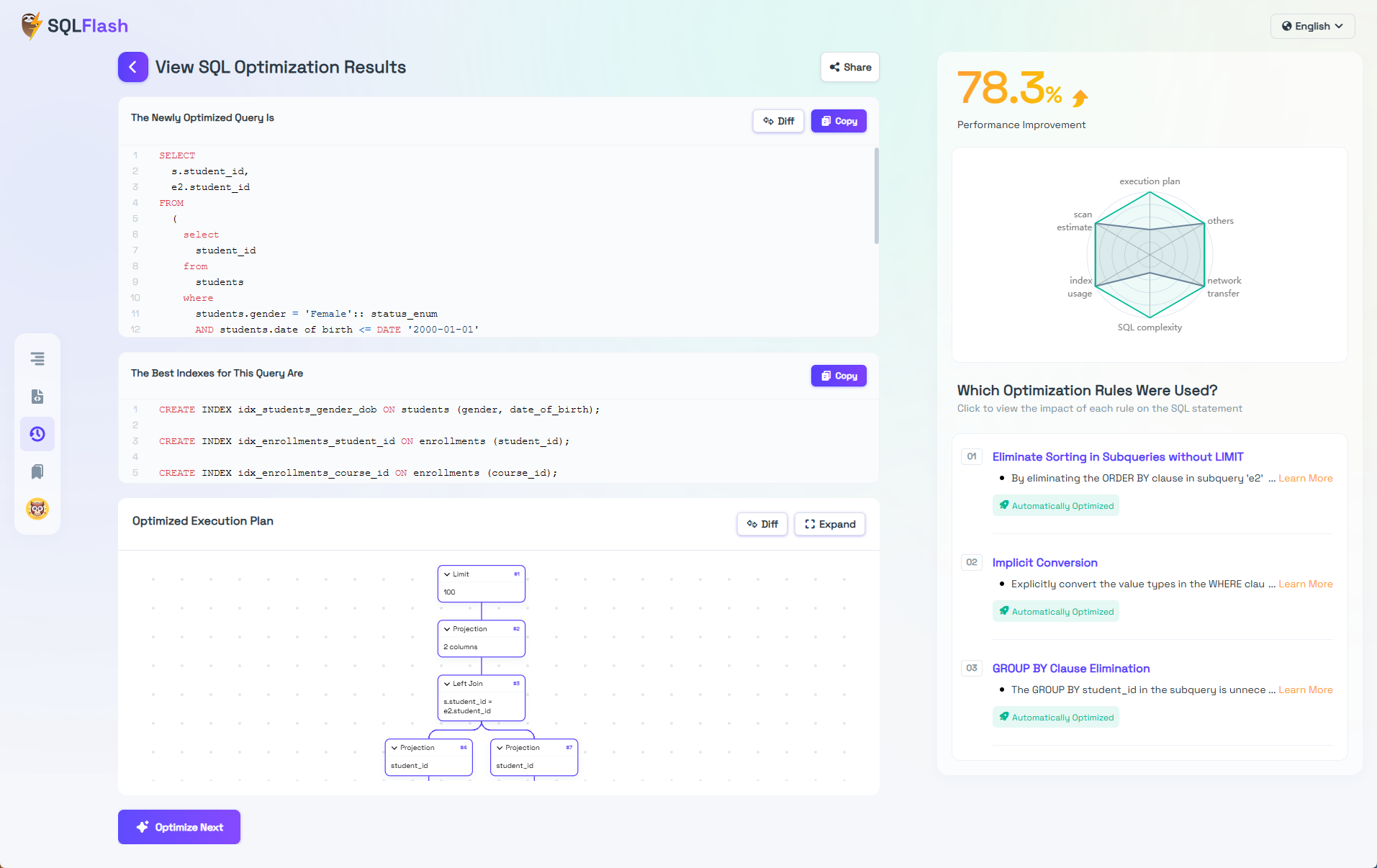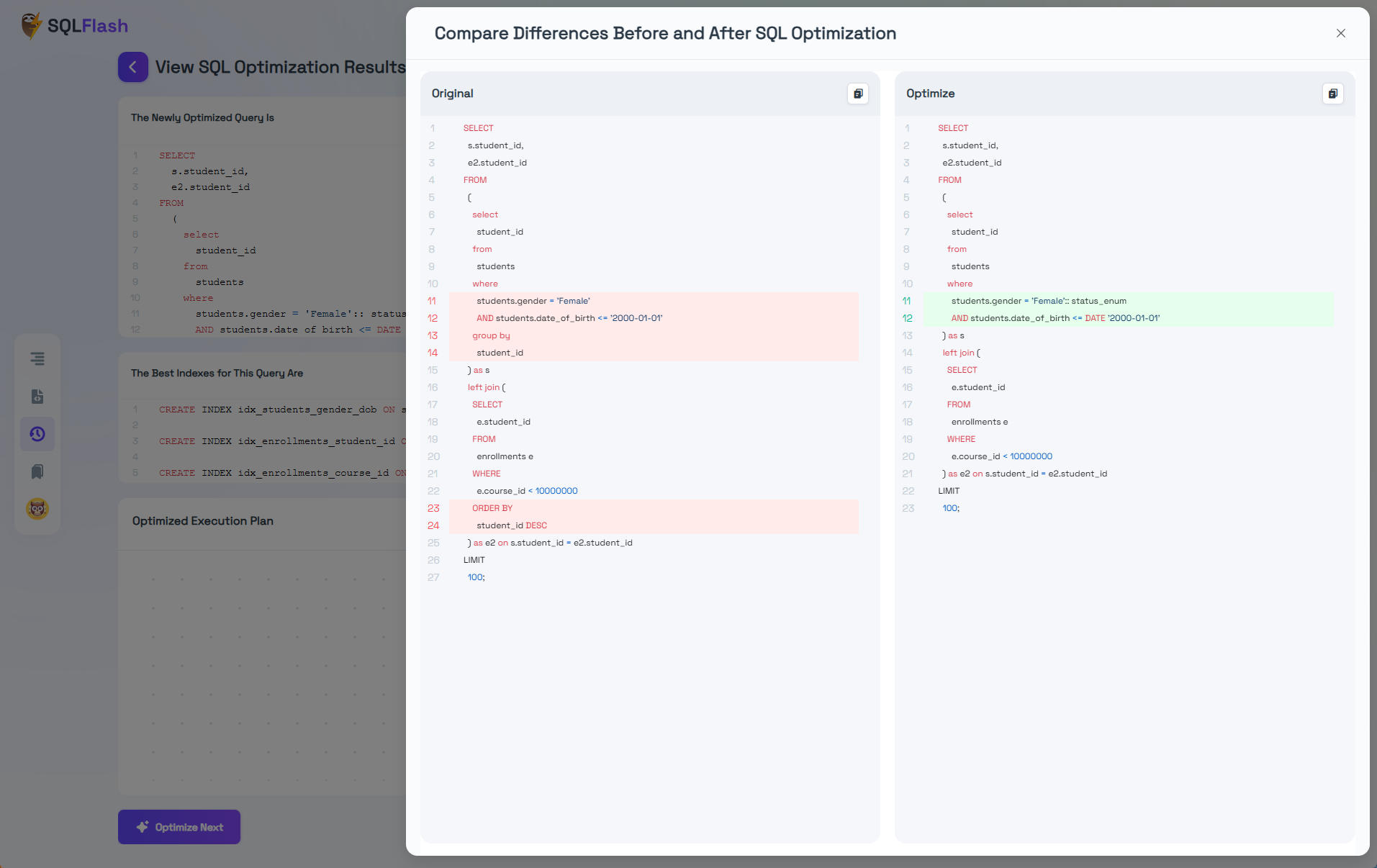PostgreSQL+SQLFlash
In just one minute, discover how SQLFlash identifies and enhances SQL performance in PostgreSQL.
Built-in with multiple optimization rules, such as eliminating LEFT JOIN, removing implicit conversions, and optimizing IN subqueries, to accurately identify SQL performance bottlenecks.
Accurately identify performance bottlenecks in slow logs, and optimize to enhance SQL query efficiency.
Analyze existing index usage based on table structure and statistical information, and recommend creating or deleting redundant indexes.
Visualize the execution plans of the original and optimized SQL statements through tree diagrams, helping users compare the changes in execution plans.
Take the optimization of a slow SQL in PostgreSQL as an example.
In the business system of an educational platform, we identified a SQL performance bottleneck. Let’s see how SQLFlash enhances the performance of SQL statements.
1. SQLFlash Optimized SQL Statement
What optimizations did SQLFlash perform?
- Eliminate Sorting in Subqueries without LIMIT: Remove redundant ORDER BY sorting in the second subquery, which does not affect the final query results without LIMIT and adds performance overhead.
- Implicit Conversion: Explicitly convert the string value in the date_of_birth filter condition to DATE type to avoid implicit conversion that may cause potential performance issues.
- GROUP BY Clause Elimination: Remove unnecessary GROUP BY clause on primary key in subquery. Since student_id is the primary key of students table and no aggregate functions are used, the GROUP BY can be safely eliminated to improve performance.
Index Advise
| |
- The query applies filtering conditions on gender and date_of_birth in the students table. A composite index on these columns allows PostgreSQL to efficiently filter rows and reduce the number of scanned tuples, especially for selective queries combined with a LIMIT clause.
- While the query does not explicitly include course_id, composite indexing on student_id and course_id is beneficial for scenarios where these columns are commonly used together in filtering or join operations. This helps optimize access patterns for frequent queries involving enrollments and minimizes the cost of table scans.
2. Performance Improvement Comparison
Query Execution Time:
- Before Optimization: 2165.777 ms
- After Optimization: 4.640 ms
Run origin SQL
| |
Add index And run Optimized SQL
| |
Performance Significantly Enhanced!

Ready to elevate your SQL performance?
Join us and experience the power of SQLFlash today!.
